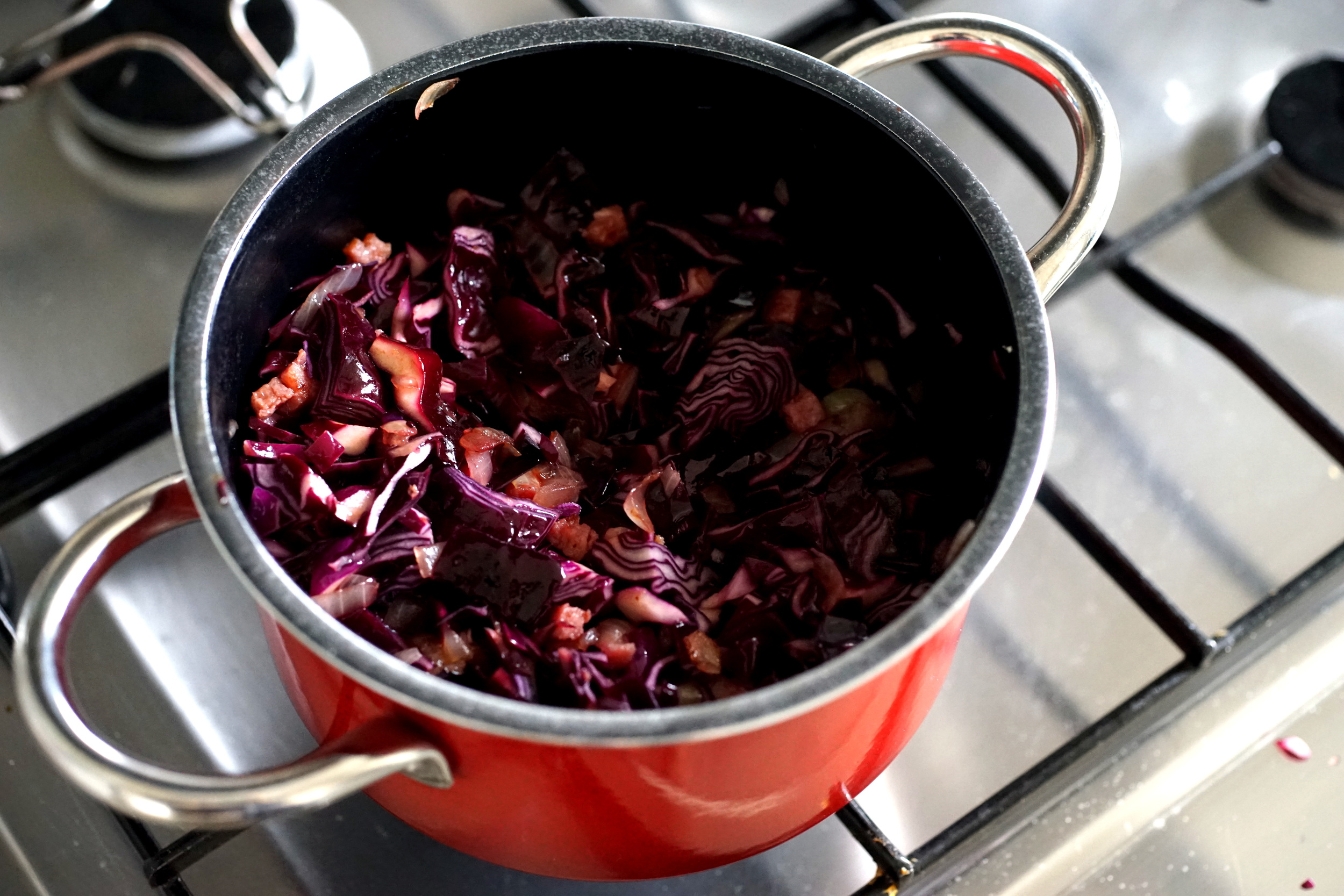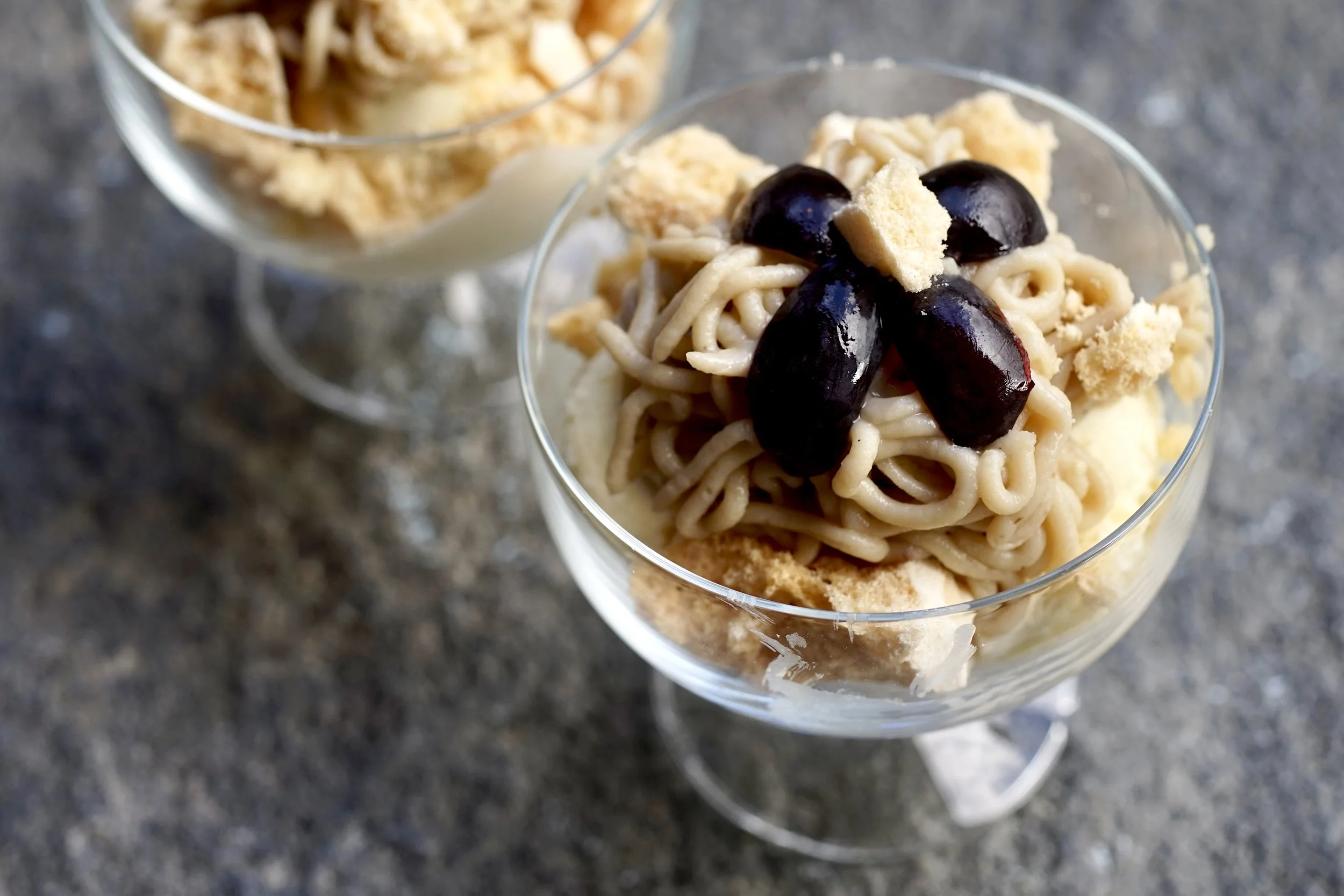Rotkohl
Cabbage, a history
Although Aristotle mentions cabbage as a hangover cure as early as the fourth century BCE, it was Hildegard von Bingen, the visionary twelfth century abbess, who was the first person to write specifically about red cabbage in her Physica, a nine part work describing the properties of various plants and animals.
LXXXIV. Cabbage
Cabbage, kale, and red cabbage (koles) are of a moist nature...They grow from the mucus of dew and air. From that they have something like powers and internal organs, and their juice is a bit injurious. They generate maladies in humans and injure weak intestines.
You can read more here.
Maladies aside, the injurious red cabbage has remained an important food staple. In the Middle Ages, the point of contention seemed to be the colour of the plant, rather than its distressing intestinal side effects. The cabbage was known as red, Rotkohl, in certain parts of the German speaking realm, and blue, Blaukohl, in others. At the time, the German language lacked the term for purple, lila, (this was later borrowed from Arabic word for the lilac plant, (lilak) during the crusades) and things that today seem very obviously purple, like this cabbage, were categorized as either red or blue.
However, another factor was at play to determine whether the cabbage was called Rotkraut or Blaukraut—the pH level of the soil. Different regions had differently balanced soils, which gave the cabbage either a blue (alkaline) or red (acidic) tint. What you called your cabbage was a sure indicator of what part of the realm you were from.
During cooking, it is still possible to influence the colour of the cabbage. By introducing acids, such as vinegar or lemon juice, the cabbage turns a lovely burgundy hue, whereas a more alkaline plant with teaspoon of baking soda will turn a deep indigo.
Regardless of its colour, it's an integral part of the Wild plate, as well as a great side dish at Christmas or Thanksgiving. This recipe produces a definitely red, sweet and meaty cabbage that your intestines will hopefully be able to withstand.
This recipe is adapted from the Betty Bossi recipe of the same name, from Aus Mutters Kochtopf (pg 55) published in 1984.
1 red cabbage
75 g bacon, diced
1 onion, diced
3 tbsp vinegar
1 apple, grated
300 ml red wine
1 stock cube
1 tbsp rice
1 tbsp cranberry sauce or red jam
bay leaf
1 tsp cinnamon
1 tsp salt
Core and chop the cabbage into small strips.
Fry the bacon in a medium pot over medium heat. Once it is brown and crispy, add the onion and cook for a few minutes, until the onion is transparent.
Add the cabbage and vinegar and stir well. Cook this for about ten minutes on low heat. If it starts to stick to the bottom of the pan, add a splash of water.
After the cabbage has cooked a little, add the apple, wine, stock cube, rice, cranberry sauce, bay leaf, cinnamon, and salt. Stir well.
Cook, covered, on low heat for about an hour. Mix well before serving.
Wine can be replaced with apple juice, or half apple juice, half water.
If you have a lot of liquid after the cabbage is cooked, you can remove the cabbage with a slotted spoon, then cook down the remaining liquid on high heat until it thickens.


















